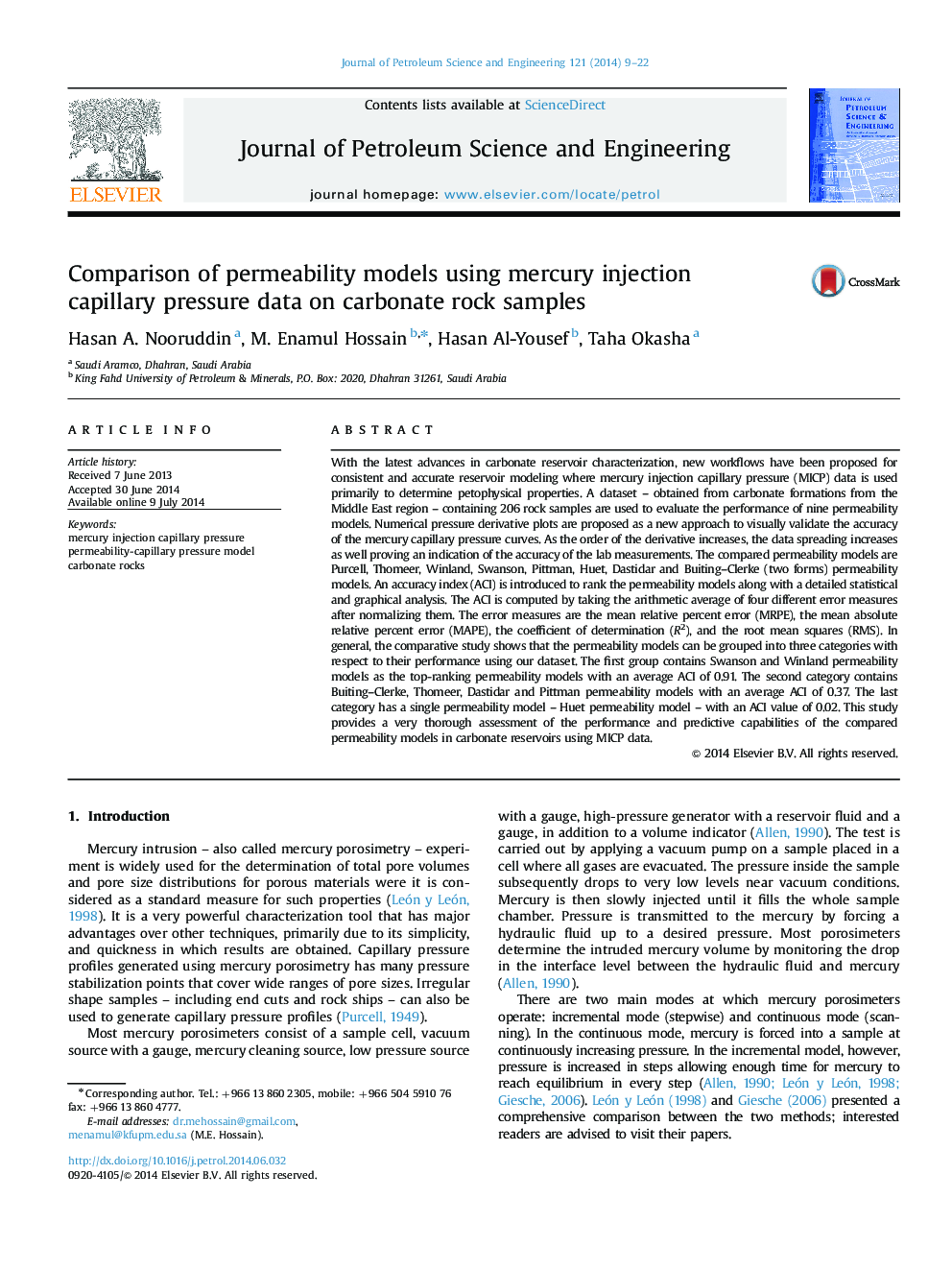| کد مقاله | کد نشریه | سال انتشار | مقاله انگلیسی | نسخه تمام متن |
|---|---|---|---|---|
| 1755053 | 1522820 | 2014 | 14 صفحه PDF | دانلود رایگان |
• 206 MICP data from carbonate rocks are used after validation.
• Validation of MICP using numerical pressure derivative plot is proposed.
• The study compares nine permeability models.
• Swanson permeability model outperformed other models.
• It also introduces new techniques to validate laboratory data before conducting the analysis.
With the latest advances in carbonate reservoir characterization, new workflows have been proposed for consistent and accurate reservoir modeling where mercury injection capillary pressure (MICP) data is used primarily to determine petophysical properties. A dataset – obtained from carbonate formations from the Middle East region – containing 206 rock samples are used to evaluate the performance of nine permeability models. Numerical pressure derivative plots are proposed as a new approach to visually validate the accuracy of the mercury capillary pressure curves. As the order of the derivative increases, the data spreading increases as well proving an indication of the accuracy of the lab measurements. The compared permeability models are Purcell, Thomeer, Winland, Swanson, Pittman, Huet, Dastidar and Buiting–Clerke (two forms) permeability models. An accuracy index (ACI) is introduced to rank the permeability models along with a detailed statistical and graphical analysis. The ACI is computed by taking the arithmetic average of four different error measures after normalizing them. The error measures are the mean relative percent error (MRPE), the mean absolute relative percent error (MAPE), the coefficient of determination (R2), and the root mean squares (RMS). In general, the comparative study shows that the permeability models can be grouped into three categories with respect to their performance using our dataset. The first group contains Swanson and Winland permeability models as the top-ranking permeability models with an average ACI of 0.91. The second category contains Buiting–Clerke, Thomeer, Dastidar and Pittman permeability models with an average ACI of 0.37. The last category has a single permeability model – Huet permeability model – with an ACI value of 0.02. This study provides a very thorough assessment of the performance and predictive capabilities of the compared permeability models in carbonate reservoirs using MICP data.
Journal: Journal of Petroleum Science and Engineering - Volume 121, September 2014, Pages 9–22
